
Why EthioNLP?
Natural Language Processing (NLP) is one of the core components of AI. There are efforts throughout the world to conduct NLP for Ethiopian languages but without formal communication among researchers. At COLING 2018, Santa Fe, USA, three researchers from Addis Ababa University (Binyam), University of Hamburg (Seid), and University of Trento (Surafel) took the initiative to create a formal NLP society for Ethiopian language NLP research.
✔ Ethiopia is a country with multinational and multilingual communities that support more than 83 different languages
✔ All the languages are underrepresented in NLP applications. Now, EthioNLP is a well-organized and research-oriented community
Our Focus Areas
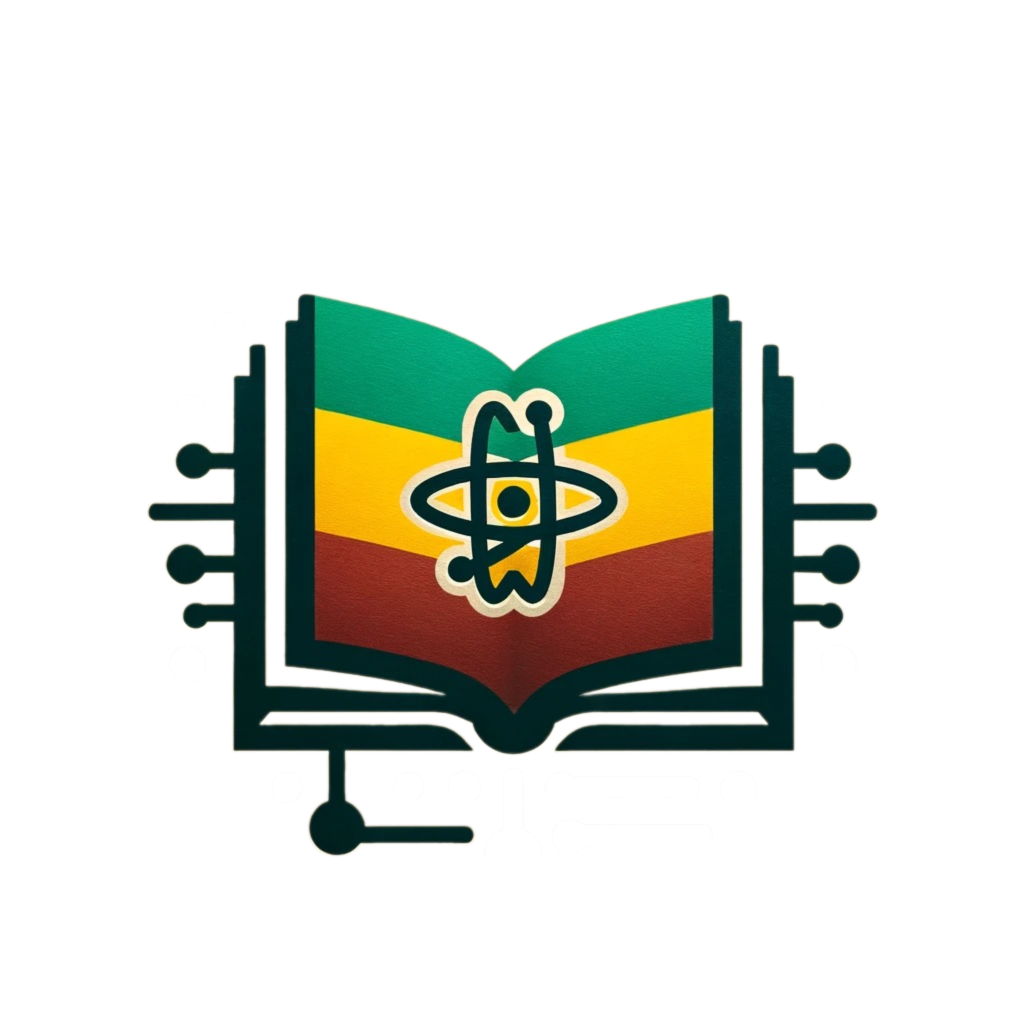
NLP Corpus and Dataset Creation
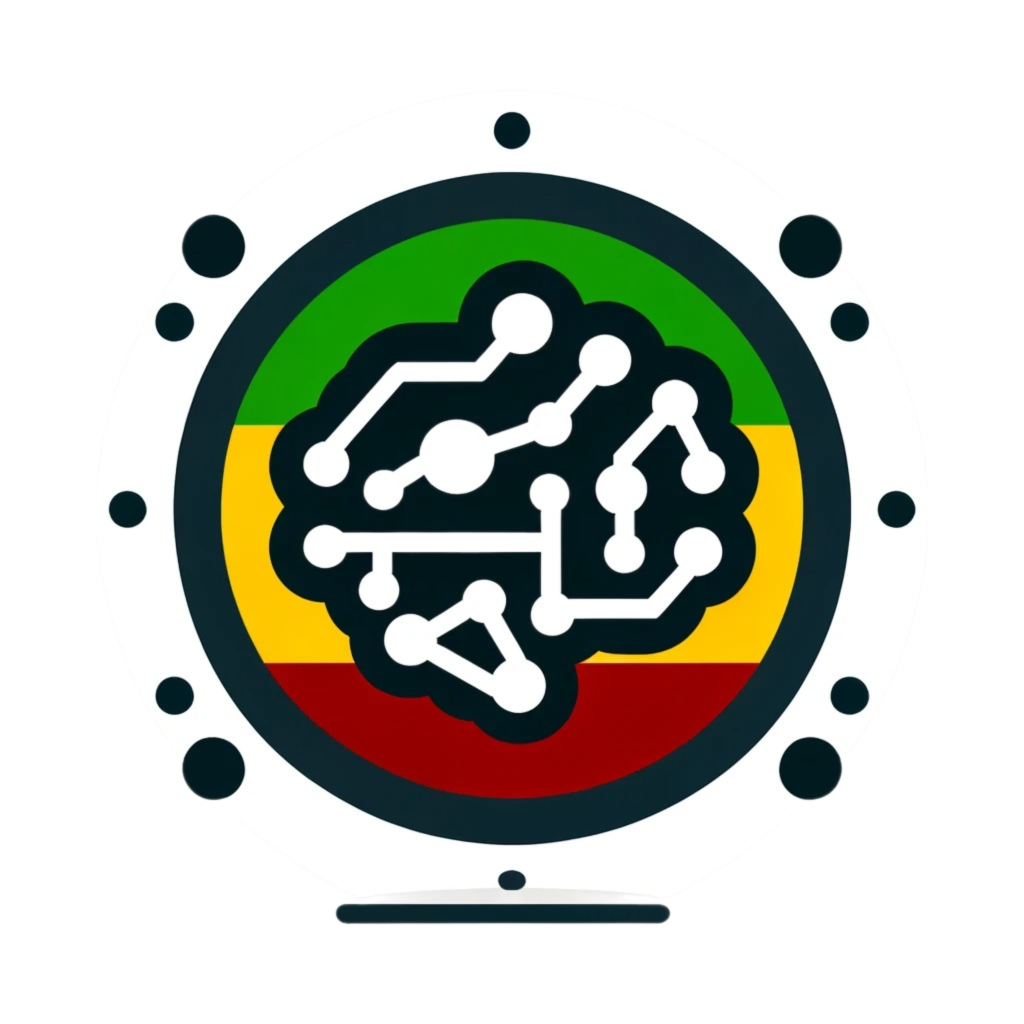
Language Model Building
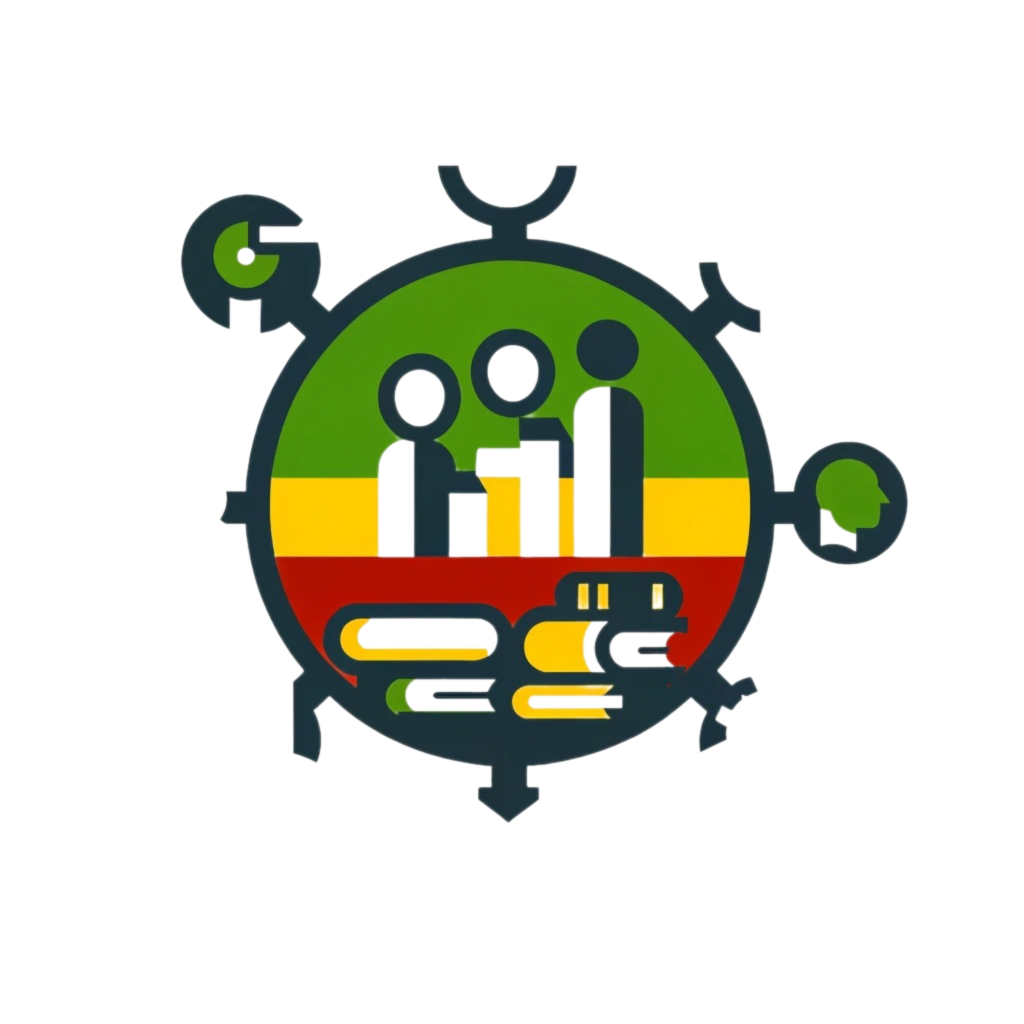
Research & Collaboration
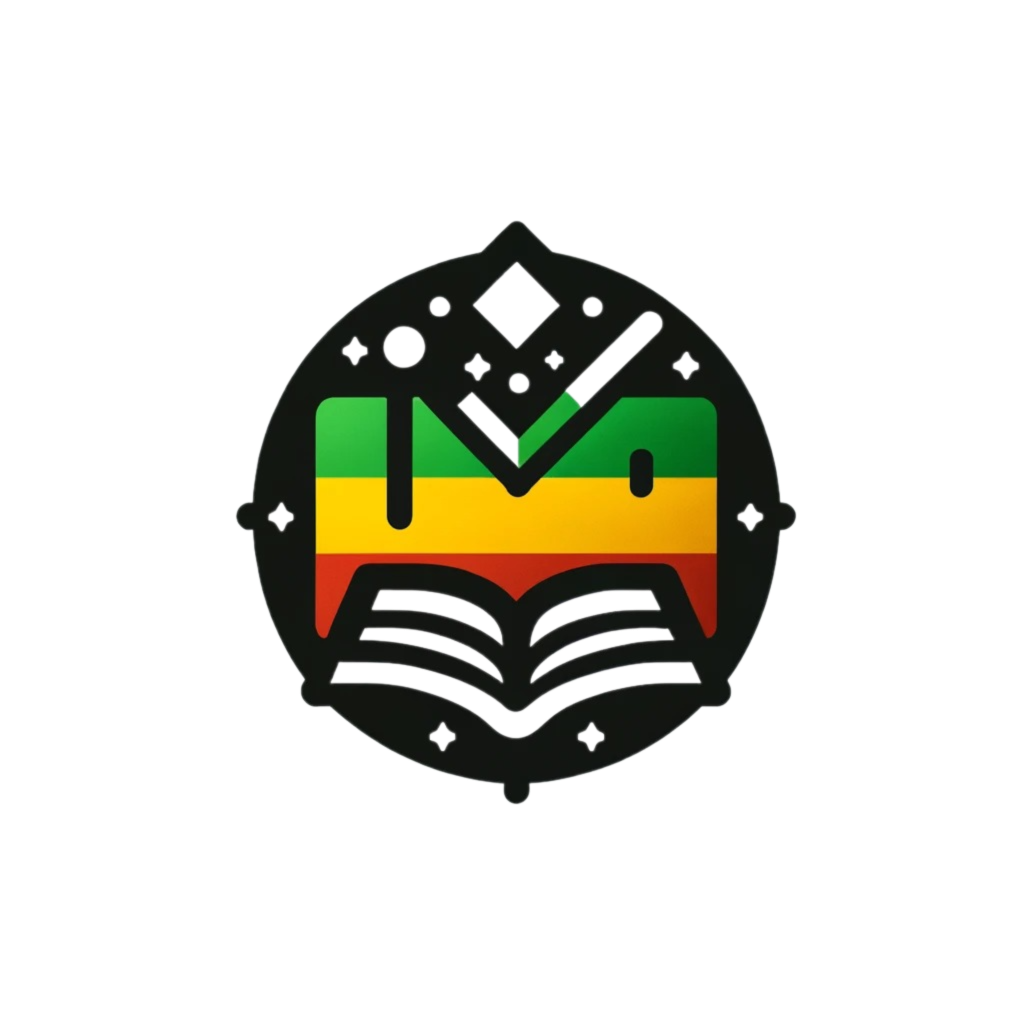
Assist Education Quality
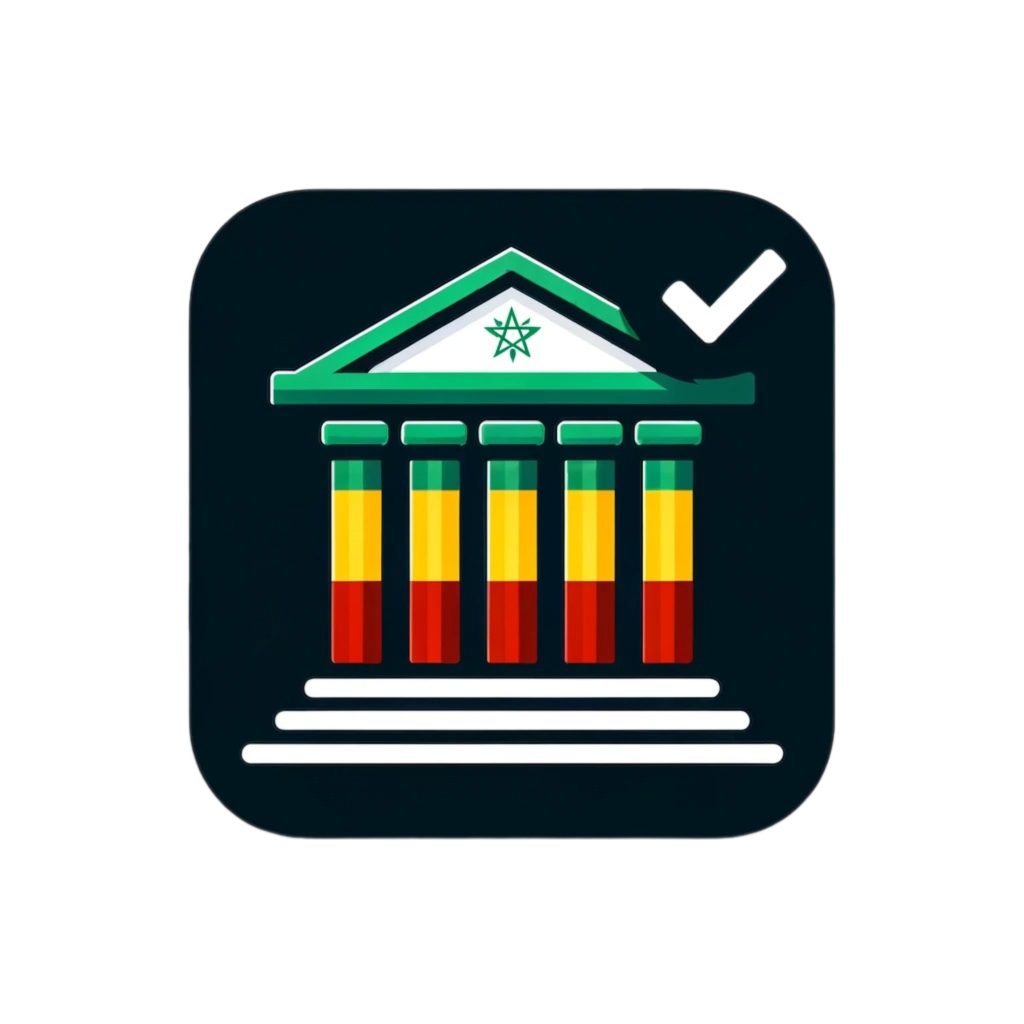
Academy to Industry Linkage

Marketplace for Professionals
Our Mission
Our mission is to advance the understanding and application of natural language processing technologies to foster innovation and growth in the field. Our community goals are but not limited to:
✔ Identify, prioritize and focus on NLP research topics for Ethiopian languages
✔ Organize workshops, seminars, and conferences for Ethiopic NLP researches
✔ Join efforts among Ethiopian NLP related researchers around the world
✔ Supporting and mentoring students in NLP and data science research.
✔ Bringing the NLP community working on Ethiopian languages together
✔ Coordinating resources for Ethiopian language research.
✔ Collaborate with Ethiopian universities and assist education quality
✔ Suggest and participate in possible Ethiopian NLP researches
✔ Setting goals, priorities, and tracks on Ethiopian language NLP
🎉Congrats to EthioNLP members @HellinaNigatu and @atnafultonja for winning Outstanding Paper Award at @emnlpmeeting for their paper, The Zeno's Paradox of "Low - Resource" Languages.
— Ethio NLP (@ethionlp) November 15, 2024
And a big congratulations to all @monojitchou @thamar_solorio @BenjaminRosman. pic.twitter.com/3SIoOyOWVq
📣 Call for Abstract
The 1st EthioNLP Workshop at ICES22
About EthioNLP2025 Workshop
Ethiopia is a multinational and multilingual country that supports more than 83 different languages, yet all these languages remain underrepresented in NLP global research. In this digital world, NLP is one of the core components of AI that is rapidly advancing every aspect of our lives. There are efforts worldwide to conduct NLP for Ethiopian languages, but there is no formal communication among researchers. EthioNLP is a research-oriented community focusing on developing NLP for Ethiopian languages. In addition to conducting research in collaboration among the EthioNLP members, organizing workshops, seminars, and conferences for Ethiopic NLP researchers is the central pillar of the community.
EthioNLP is organizing the first Current Status and Future Directions in Natural Language Processing for Ethiopian Languages (EthioNLP) workshop, which will be co-located with the 22nd International Conference of Ethiopian Studies (ICES22).
Workshop: Current Status and Future Directions in NLP for Ethiopian Languages
Co-located with: ICES22 — Hawassa University, Ethiopia
Dates: September 29 – October 03, 2025
Aims of the workshop:
- To bring global attention to Ethiopian language research, forge new collaborative networks, and define future research trajectories.
- To showcase work being done by the EthioNLP community
- To support ongoing studies and mentor MSc and PhD students in NLP and data science research and present their works
- To collaborate with research experts in the area and strengthen the EthioNLP community
- To collaborate with Ethiopian universities and assist education quality
- To gather experts and discuss the latest research, encouraging interdisciplinary research to foster future collaborations
- To bridge academia and industry to enhance the practical applications of NLP technologies in local contexts.
Topics of Interest Include (but not limited to):
- Challenges or solutions for resource gathering for Ethiopian languages and NLP tasks
- Analyses of Ethiopian languages using computational linguistics
- New resources (corpora and dataset) for Ethiopian languages
- Multilingual NLP techniques for Ethiopian languages
- Tutorials for Ethiopian NLP for education or development purposes
- Development of NLP systems for Ethiopian languages for production
- Building and evaluation language models for Ethiopian languages
- Evaluation of NLP techniques for downstream NLP tasks for Ethiopian languages (Machine Translation, speech recognition, POS tagging, NER, sentiment analysis, etc.)
- Empirical studies reporting results from adapting developed high-resource languages NLP to Ethiopian languages
- Crowdsourcing and open-sourcing data collection and preprocessing tools/software for Ethiopian NLP
- Language model bias and ethical considerations for Ethiopian NLP
📝 Accepted Papers
1. Preparing a High-Quality Parallel Dataset for Low-Resource Amharic-Khimtagne to Enhance Machine Translation ModelsAuthors: Chekole, Adane Kasie
Abstract: The scarcity of high-quality parallel datasets presents a significant challenge to developing machine translation (MT) systems for low-resource languages like Amharic and Khimtagne. Khimtagne, with its limited digital presence and resources, remains underrepresented in the realm of natural language processing. To address this gap, this study focuses on preparing a high-quality parallel dataset for Amharic-Khimtagne language pairs. Using diverse sources such as religious texts (e.g., the Bible), educational materials from social and natural sciences, legal documents, AMCo mass media news, and other institutional publications, we have successfully compiled a corpus of 17,153 parallel sentences. Our dataset underwent rigorous preprocessing steps, including normalization, tokenization, and linguistic validation by native speakers. Preliminary results from neural MT models trained on this dataset demonstrate a significant improvement in translation quality. The BLEU score increased from 4.52 to 21.5, indicating enhanced linguistic alignment and semantic accuracy. Despite these achievements, challenges such as dialectal diversity, limited domain coverage, and nuanced linguistic structures remain. Our findings highlight the critical role of curated datasets in enhancing MT systems for underrepresented languages, offering a foundation for future research and applications in Amharic-Khimtagne translation.
2. Enhancing Amharic NLP with Formal Semantics: Tackling Pragmatic Challenges through Linguistic Analysis
Authors: Tura, Zinawork; Feyisa, Terefe ; Desalegn, Elshaday; Berhanu, Natanim
Abstract: The inherent complexity of human language, particularly its pragmatic aspects, poses a profound and persistent challenge for modern Natural Language Processing (NLP) tools. While significant strides have been made in syntactic parsing and compositional semantics, current NLP systems frequently falter when confronted with phenomena that transcend literal meaning, such as irony, sarcasm, metaphors, indirect speech acts, implicatures, and presuppositions. These pragmatic subtleties, which rely heavily on shared context, speaker intent, and common-sense reasoning, often lead to misinterpretations, brittle performance, and a lack of true human-like understanding in AI. This study argues that integrating formal semantics into NLP frameworks offers a principled and robust approach to mitigate these pragmatic limitations. By providing precise, logical representations of meaning and a systematic methodology for modeling contextual factors, speaker beliefs, and communicative goals, formal semantics can equip NLP tools with the analytical power to infer unstated meanings, resolve ambiguities based on real-world knowledge, and better understand the underlying intent behind utterances. This integration is crucial for moving beyond surface-level linguistic processing, fostering the development of more sophisticated, adaptable, and truly intelligent language understanding capabilities in artificial intelligence systems.
3. Ethio-Semitic proto-language reconstruction with In-context learning and LSTM-based encode-decode model
Authors: Temesgen, Elleni; Nigatu, Hellina; Assamnew, Fitsum
Abstract: As language evolve, it change and words obtain new meanings and lose old ones making their reconstruction a critical area of study. This research focuses on Proto-EthioSemitic language reconstruction at the word level, targeting cognate identification and proto-word reconstruction. A three-way dictionary was used to compile a dataset of semantically related words from Amharic, Ge’ez, and Tigrinya. Both linguist-verified and automated methods were employed to identify cognates. Synthetic proto-forms data set were generated using in-context learning with GPT-4o, and an LSTM-based encoder-decoder model was built and trained to predict these forms. The research highlights the value of combining linguistic expertise, computational tools, and language models to advance the reconstruction of ancient ancestral Ethio-Semitic languages.
4. Geez Morphological-Based Part of Speech Tagging Using Deep Learning
Authors: Asmare, Habtamu Shiferaw*; Getahun, Mebit Kefale
Abstract: This study presents the development of an LSTM-based Geez morphological-based part-of-speech tagger model. With Geez being a Semitic language spoken in Ethiopia and Eritrea, this study addresses the problem of a lack of computational resources for natural language processing tasks in Geez. A dataset of 2000 sentences with 19k words and 6900 unique words was collected from various sources and manually annotated to develop the model. The text data was preprocessed using tokenization, sequencing, and padding techniques to ensure efficient processing by the model. The model was constructed using a Keras embedding layer, LSTM layer, and dense layer with a 50-epoch and training regime on an 80/20 train-test split. The efficiency of the proposed model was evaluated and achieved an 81% accuracy score, indicating its potential applicability to natural language processing tasks in Geez. The results of this study show promising evidence of the potential of LSTM-based models in identifying morphology and part of speech in the Geez language. This study's contribution has significant implications for developing natural language processing tools and resources for low-resource languages such as Geez. Furthermore, the study's contribution could be extended by considering more sophisticated architectures and techniques such as transformers and attention-based models that could enhance the model's accuracy on more diverse datasets.
5. Transformer-based Amharic Complexity Classification and Simplification
Authors: Nigusie, Gebregziabihier
Abstract: Amharic is a Semitic family language widely spoken in Ethiopia. Based on expertise recommendation, some of the document organized using this language contains complex texts that need further simplification. Such complexity is the level of difficultness of the text for understanding by the target readers. In addition to humans, this complex text challenges different NLP applications such as machine translation. To address this issue, we have developed three sequential models such as complexity classification, complex term detection, and simple text generation models. For the first model, we have used the pre-trained transformer-based models such as BERT and XLNET to train these models. 33.9k Amharic sentences are used, and for building the detection model 1002 complex terms are used. Lastly, 91k Amharic sentences are used to build the simple text generation model such as Word2Vec, Fastext, and Roberta. As the experimental result shows, the classification models such as BERT and XLNET score an accuracy of 86.1% and 70% respectively. For the specific complex term detection and to generate the simple equivalent text, the Word2Vec model has better prediction and ranking results. This Word2Vec generates the most similar simple terms with a cosine similarity of 0.91, while the Fastext scores 0.85 and Roberta 0.57. Addressing the syntactic complexity of Amharic text is our recommendation in this work for future research.
6. Chatbot-Based Agricultural Extension Service Model Using Deep Learning
Authors: Binbessa, Aklilu
Abstract: This paper explores the development of an AI-based chatbot model designed to enhance agricultural extension services (AES) in Ethiopia, addressing limitations faced by Agricultural Development Agents (ADAs). An Amharic chatbot was developed using deep learning and NLP techniques, providing 24/7 assistance to ADAs. A 216KB textual agricultural dataset in Amharic was gathered from the Wolaita zone agricultural office and the Terepheza Development Association (TDA) and prepared as question-answer pairs in MS-Excel. The preprocessed dataset was used to train encoder-decoder models with RNNs (LSTM, BiLSTM) and Transformer networks. Key preprocessing steps included punctuation removal, Amharic character normalization, and tokenization. The Transformer network outperformed RNN-based models, achieving a test BLEU score of 94.84% and a test loss of 8.05%. The superior performance of the Transformer model can be attributed to its self-attention layer and positional encoding. This demonstrates its efficiency and prediction quality for this application. This research proposes a novel chatbot-based AES model to augment the existing system in Ethiopia and provides insights for developing AI chatbots utilizing the Amharic language within the AES domain. The developed source code is available for use by other researchers and educators.
7. Towards Morphology-Aware Sentiment Analysis of Code-Switched Ethiopian Languages Using Multi-Task Learning
Authors: Tadesse, Tinsae; Jundurahman , Abdulmunim ; Alemayehu , Yohannes
Abstract: We address the lack of sentiment analysis tools for Ethiopian social media posts that mix Amharic, Afaan Oromo, or Tigrinya with English. Existing resources such as AfriSenti cover only monolingual tweets, leaving the more prevalent code-switched content unannotated; these under-resourced Semitic and Cushitic languages exhibit complex morphology and suffer from extremely scarce labeled data, challenges further compounded by informal, intra-sentence language switching. This gap is particularly problematic given the frequency with which users alternate languages within a single post, rendering standard monolingual pipelines ineffective. We therefore propose a cost-efficient, low-resource pipeline built entirely on freely available corpora (OSCAR, CommonCrawl, CC-NEWS, Wikipedia), forgoing paid APIs, and integrate HornMorpho—a rule-based mor phological analyzer for Ethiopian languages—within a fine-tuned XLM-R transformer under a multi-task learning framework to jointly perform language identification, morphological tagging, and sentiment classification. To augment the limited training data, we employ EthioMT back-translation and weak supervision signals derived from emoticons and existing sentiment lexicons, producing a novel annotated corpus of code-switched Ethiopian social media posts. Experi mental results demonstrate that our morphology-driven, multi-task model outperforms strong multilingual baselines on Ethiopian language benchmarks, marking the first end-to-end multilingual solution for sentiment analysis in this domain. All resources—models, code, and the new corpus—will be publicly released to foster further research in low-resource NLP. [Amharic; Afaan Oromo; Tigrinya; code-switching; sentiment analysis]
8. Bilingual Hate Speech Detection on Social Media: Amharic and Afaan Oromo
Authors: Ababu, Teshome
Abstract: Due to significant increases in internet penetration and the development of smartphone technology during the preceding couple of decades, many people have started using social media as a communication platform. Social media has grown to be one of the most significant components, with several benefits. However, technology also poses a number of threats, challenges, and barriers, such as hate speech, disinformation, and fake news. Hate speech detection is one of the many ways social media platforms can be accused of not doing enough to thwart hate speech on their platform. People in Bilingual and multinational societies commonly employ a code mix in both spoken and written communication. Among these, Amharic and Afaan Oromo language speakers frequently mix the two languages when conversing and posting on social media. The majority of previous study concentrated on identifying either technological favoured language or monolingual hate speech in Ethiopian languages; however, the availability of Bilingual communication in social media hampers the propagation of hate speech via social media. In this work, a Bilingual hate speech detection for Amharic and Afaan Oromo languages were conducted using four different deep learning classifiers (CNN, BiLSTM, CNN-BiLSTM, and BiGRU) and three feature extraction (Keras word embedding, word2vec, and FastText) techniques. According to the experiment, BiLSTM with FastText feature extraction is an outperforming the other algorithm by achieving a 78.05% accuracy for Bilingual Amharic Afaan Oromo hate speech detection. The FastText feature extraction overcomes the problem of out of vocabulary (OOV). Furthermore, we are working towards including others linguistic features of the languages to detect hate speech and make the resource available to facilitate further research in the area of Bilingual hate speech detection for other under-resourced Ethiopian languages.
9. Awgni News Text Classification Using Deep Learning
Authors: Haile, sileshi
Abstract: Today's development of the internet has made Awgni news text easily available and widespread online. Awgni, being a low-resource language spoken predominantly in the western regions of Ethiopia, uses the Ge'ez script, like other Ethiopian languages like Amharic and Tigrinya. With its cultural significance and increasing amount of digital content in Awgni, it is necessary to develop automated tools for Awgni classification and processing to strengthen the burgeoning digital ecosystem. Previous research has shown significant progress in news classification across many languages; however, there is no prior work on Awgni news text classification using deep learning techniques. The objective of this thesis is to apply deep learning approaches to Awgni news text classification using CNN, LSTM, and BiLSTM algorithms and to recommend the best for the problem at hand. Because there are no publicly available datasets for the Awgni language, 7,092 newly gathered and manually annotated news text samples were brought together and employed to create the model in this research. The corpus was collected from two primary sources: online dataset from the Amhara Media Corporation's Awgni program Facebook page, grasped applying the Facepager tool, and manually obtained news texts gathered from the Awgni news coordinator’s office located at the Injibara sub-office. In this work, various natural language processing tasks, such as text preprocessing, which includes normalization, tokenization, text cleaning, and removal of stop words, are performed. The experiment results showed a high classification accuracy for all the three models, with CNN being the best. CNN was the best, with 97.4% accuracy and 97.7% precision, followed by BiLSTM with 97.36% accuracy and 97.5% precision, and LSTM with 97.1% accuracy and 97.16% precision. The experiment results show the strength of deep learning in text classification in low-resource languages.
10. Stance Categorization on Grand Ethiopian Renaissance Dam for Amharic, Arabic, and English Text Using Deep Learning
Authors: Haile, sileshi
Abstract: Nowadays, the internet has made Amharic, Arabic, and English texts widely available online. Therefore, large quantities of discourses about the Grand Ethiopian Renaissance Dam have taken place in Arabic, Amharic, and English. However, due to differences in context, morphology, and character representation, existing models created for distinct languages cannot be applied to multilingual languages like English, Arabic, and Amharic. In this study, we examine the stance classification problem for those texts that contain information on the Grand Ethiopian Renaissance Dam by their stance classes, such as support, opposition, and neutrality, and Ethiopia, Egypt, the Grand Ethiopian Renaissance Dam, and neutrality for the target class. Our model simultaneously performs both target and stance categorization tasks. To develop these models in this study, we have collected 731,856 newly unannotated texts from selected channels, and we have used 13,561 labeled datasets to build the model for the Amharic, Arabic, and English languages. The dataset collected for this research includes social media posts and official statements to represent views expressed from various platforms, namely Twitter, YouTube, and Facebook, using Twitter API, YouTube API, and Facepager. In this work, various natural language processing tasks, such as text preprocessing, which includes text cleaning, normalization, tokenization, and removal of stop words, are performed. Lastly, the result of our stance models is compared, and CNN has great accuracy with 86% accuracy. On the other hand, our target classification result achieves an excellent accuracy rate of 87% for texts using BiLSTM.
11. Automated Classification of Amharic News Articles Using NLP and Deep Learning Models
Authors: Heile, Atlaw; Gebeyehu, Balemlay; Eshetu, fekadu
Abstract: The automated classification of Amharic news articles is a vital task in Natural Language Processing (NLP), addressing challenges associated with the language's complex morphology and limited resources. Despite advancements in deep learning for text classification, Amharic remains underrepresented, presenting a significant gap in existing solutions. This study implemented a robust methodology combining FastText and Word2Vec embedding with CNN-based architectures, including CNN-RNN, CNN-LSTM, and CNN-BiLSTM, utilizing activation functions like ReLu, Softsign, and Sigmoid. The experimental results revealed that FastText with CNN-BiLSTM and ReLu achieved the highest accuracy of 98.88%, outperforming other configurations. This research highlights the potential of advanced embeddings and hybrid deep learning models for under-resourced languages, offering critical insights into optimizing NLP techniques for effective Amharic text classification.
12. A Dual-Layer Framework for Morphology-Aware and Culturally Contextualized NLP in Amharic
Authors: Tesfay, Samrawit; Yohannes, Ruhama
Abstract: Amharic, a Semitic language spoken by over 60 million people, presents unique challenges for Natural Language Processing (NLP) due to its templatic morphology and culturally nuanced semantics. Existing methods, designed for high-resource languages, struggle to preserve the structural integrity of Amharic’s root-and-pattern system and frequently misinterpret non-compositional expressions. This paper introduces a novel dual-layer framework to address these challenges by harmonizing linguistic structure and cultural context.
13. Leveraging Large Language Models for Financial Sentiment Analysis for Low Resourced Language: The case of Amharic
Abstract: The rise of financial posts on social networks showed the need for Natural Language Processing (NLP) tools for sentiment analysis in diverse languages. Low-resource languages such as Amharic have received little attention, despite the fact that financial natural language processing has advanced significantly for high-resource languages. In this study, the feasibility of using pre-trained multilingual Large Language Models (LLMs), namely AfriB- ERTa and mBERT, for the analysis of financial sentiment of Amharic is investigated. This study addresses the challenges posed by Amharic’s language complexity and data scarcity by fine-tuning these models on 6213 a newly collected and carefully annotated Amharic financial social media dataset. The sentiment polarity (positive, negative, neutral) was labeled by native Amharic speakers following a defined guideline. Our experiments examine the impact of parameter tuning and vocabulary adaptation on model performance. The results showed that while both models are promising, mBERT performs better (69.7%) accuracy and 69.5% F1-score in retrieving the Amharic financial sentiment than AfriBERTa which is 68.0% accuracy and f1-score. In the future, our goal is to develop domain-specific NLP tools tailored for financial sentiment analysis.
Authors: Mossa, Neima*; Nigusie, Gebregzihabhier
14. Comparison And Evaluation Of Different Error Detection Models On The Amharic Language
Authors: SEID, MELIKA
Abstract: NLP (Natural Language Processing) models have been known to show high performance in the English language due to the abundance of research in that area. However, low-resource languages like Amharic, despite having a large number of native speakers, remain unexplored. Consequently, even large language models like chat-GPT make drastic errors in translation and generation of Amharic text. This paper systematically compares and evaluates the performance of diverse error detection models for Amharic, addressing critical gaps in existing research. We analyze rule-based systems and pre-trained multilingual language models. Our evaluation employs the Amharic Error Corpus, which categorizes non-word and real-word errors, and incorporates contextual benchmarks to assess precision, recall, and F1-scores. We emphasize the unique challenges posed by Amharic’s script variations and morphological richness, which complicate error detection. This work underscores the urgency of advancing NLP tools for low-resource languages, offering actionable insights for optimizing error detection systems in linguistically diverse contexts.
15. Improving Amharic Legal Question Answering with Retrieval-Augmented Generation and Locally-Sourced Data
Authors: Feyisa, Terefe; Desalegn, Elshaday ; Berhanu, Natanim ; Assefa, Zinawork
Abstract: Rapid advances in artificial intelligence (AI) demand trustworthy, secure solutions for low-resource languages. This paper presents a Retrieval-Augmented Generation (RAG) framework tailored to legal Question Answering (QA) in Amharic–a language characterized by scarce Natural Language Processing(NLP) resources and complex morphology. By integrating locally sourced domain data with semantic chunking, paraphrase-multilingual-mpnet-base-v2 embeddings, and the Qdrant vector database, we address the challenges of script complexity and morphological variability. We systematically evaluate configurations involving chunking strategies, embedding models, and vector stores using the Retrieval-Augmented Generation Analysis Suite (RAGAS) framework. Our RAG-C configuration achieved context relevance of 0.797, faithfulness of 0.833, and answer relevance of 0.788–improvements of 33.7%, 45.9%, and 25.5% over traditional Information Retrieval (IR), and up to 98.3% in faithfulness versus a zero-shot Large Language Model (LLM). Retrieval at k = 5 and 512-token chunks yielded an F1 Score of 0.755, highlighting gains in semantic accuracy and factual grounding without extensive fine-tuning. Despite these gains, challenges in Geez script extraction, data scarcity, and computational demands remain. Future work will explore Amharic-specific chunking algorithms, enriched embeddings on larger corpora, and hierarchical retrieval methods to further enhance performance.
16. Multilingual Fine-Tuning for Few-Shot Cross-Lingual Sentiment Classification of Amharic Text
Authors: Asebel, Muluken
Abstract: Classifying sentiments in low-resource languages such as Amharic is extremely difficult because of the lack of labeled datasets and sparse linguistic resources. Pretrained multilingual language models can be helpful for fostering cross-lingual transfer learning, particularly in few-shot scenarios where only limited supervision is offered. Methods: This study assesses the impact of multilingual fine-tuning on few-shot Amharic sentiment classification at the model level using four transformers: XLM-RoBERTa-base, Afro-XLM-R-mini, Afro-XLM-R-base, and Afro-XLM-R-large. Each model was fine-tuned using a small labeled Amharic sentiment dataset. We trained all models under the same training conditions and evaluated performance using a combination of accuracy, precision, F1-score, and recall. Results: The best performance was achieved by the Afro-XLM-R-large model, which attained an accuracy of 85.2% and F1 score of 85.1%, validating the advantages of regionally tailored pretraining. Followed by Afro-XLM-R-base with 81.4% and XLM-RoBERTa-base with 79.6% accuracy. Despite being the smallest model, Afro-XLM-R-mini achieved a commendable accuracy of 77.1%. Discussion: Our results demonstrate that few-shot fine-tuning of multilingual models, especially those pretrained on African languages, can deliver remarkable results for Amharic sentiment analysis. This accentuates the need for models linguistically and regionally targeted while also suggesting that Afro-XLM-R-mini proves to be a compact yet powerful model in low-resource scenarios.
17. Crowdsourcing Platform for Ethiopian Language Data Collection
Authors: Bizuneh , Tewodros
Abstract: Ethiopia is home to around 80 distinct indigenous languages in all its areas. Although there are countless languages from these regions, most remain mostly absent from the study of Natural Language Processing and other technology fields. The reason for this lack is mainly that building these language tools requires huge and diverse datasets that are not always available. Our idea is to create a thorough and all-embracing crowdsourcing site that supports the collection and arrangement of language data for the Ethiopian community. Since the platform focuses on availability and growth, it will be easy to use on any device, function without an internet connection, and suit users in all areas to participate fully.
18. Linguistically Enhanced Unsupervised Machine Learning based Dialect Discovery for Under-Resourced and Morphologically Rich Languages
Authors: Mohamed, Yesuf; Shimeles, Abnet; Bekuretsion, Befekadu
Abstract: Many Ethiopian languages, like Ethio-semitic, exhibit rich morphological structures and significant dialectal variation. While some dialects are known to linguists, there may exist latent dialects that have not yet been formally identified. Unfortunately, automatic dialect identification in such languages remains largely unexplored due to the scarcity of labeled data and the ineffectiveness of approaches developed for high-resource languages like English. This study proposes an unsupervised machine learning approach with basic linguistic features augmentation to facilitate data driven clustering from a large body of text for dialect discovery, enabling the automatic detection of both known and previously undocumented dialects using raw, unlabeled text data. We opt to infuse manually extracted features from morphological variations, phonological markers, and regional morphemes that often indicate dialectal differences with the training data to build a well-performing model for dialect discovery. Our method is especially suited for morphologically rich languages, where traditional token-based models fail due to the presence of numerous inflected forms derived from a single root. Unlike prior works that focus on dialect classification and depend on annotated corpora, our method aims to discover any pattern that indicates a possible dialect, our approach is language-agnostic and can be extended to other under-resourced languages with minimal adaptation. Our approach opens a new way for low-budget, less-effort, data-driven unknown dialect discovery for under-resourced Ethio-semitic languages. It also offers a cost-efficient pathway to build dialect-aware NLP resources where labeled data is unavailable or expensive to produce.
19. Humanities Studies in the Time of AI: Philosophical Reflection on Language Development, Cognitive Justice and Ethics of AI in Ethiopia
Authors: Berento Assefa, Eyasu
Abstract: Unlike technological language and AI tools for communication and epistemological development, natural language possesses special form of suggestiveness that carries the literal and hidden meaning, world views, and philosophical wisdom of the given society. Due to the aggressive expansion of technology in the time of globalization and AI, the vast array of humanities studies including language studies, cultural treasures, means of communication, education and knowledge production in Ethiopia are profoundly challenged. This is manifested in the daily communications, school pedagogy and curricula, workplace and different social – political – public forums and the cultural and language development. This gradually affects cognitive development and learning natural language. So, how does the interplay between technology and language influence the cultural, philosophical and epistemic treasures where personal and communal autonomy is questioned or overlooked, and the human element may be neglected? And what are the possible ethical implications of technology in cultural and linguistic diversities and cognitive justice in contemporary Ethiopia? The general objective is a philosophical reflection on the possible impacts of technology on the humanities studies from the theoretical perspective of cognitive justice. As a desktop research, qualitative research method is used from Critical Social Theory perspective supported by the emerging literature on the debates in areas of ethics of AI and cognitive justice as a variant of global justice. It is suggested that any activity which directly or indirectly touches the cultural treasures and world views of societies are expected to be well guided by the ideals of ethics and social values.
20. Automated Recognition of Ethiopian Sign Language (EthSL): Bridging Critical Gaps in Technology-related Research
Authors: Dadi, Elizabeth
Abstract: Ethiopian Sign Language (EthSL) is a distinct language used by millions of Deaf in Ethiopia. The communication gap between the Deaf and hearing communities, largely due to a lack of sign language proficiency among the latter, highlights a critical area where technology can play a transformative role. However, the development of automated recognition systems, machine translation, and other Natural Language Processing (NLP) systems for EthSL remains in its nascent stages. This study critically reviews existing research aimed at automating EthSL. A desk review done reveals a growing number of technology-related research initiatives over the last decade, particularly in machine translation and recognition, with researchers from software engineering and computer science actively attempting to bridge the communication gap. Despite these promising efforts, significant gaps persist, primarily due to a lack of proper linguistic analysis and prevalent misconceptions. The pervasive misconception in the reviewed studies is the overemphasis on fingerspelling and numbers, often incorrectly perceived as the primary components of EthSL. These leads to the neglect of essential manual and non-manual components, as well as crucial linguistic structures inherent to the language. This oversight, compounded by a scarcity of appropriate sign language data and comprehensive linguistic analysis, has resulted in inadequate outcomes in gesture detection. The limited involvement of sign language linguists contributes to these shortcomings. Scarcity of well-annotated EthSL datasets, absence of standardized benchmarks, and the inherent complexities of capturing the language's multi-modal characteristics, such as facial expressions and body movements, further complicate the gap. Given technology's profound potential to facilitate accessible communication for Deaf individuals in Ethiopia, sustained and linguistically informed research is crucial.
21. Effect of Parallel Data Processing Model on Bi-Directional English-Khimtagne Machine Translation Using Deep Learning
Authors: Chekole, Adane Kasie
Abstract: Neural Machine Translation (NMT) is a key application of Natural Language Processing (NLP) that allows text to be translated automatically from one natural language to another without the need for human interaction. The goal of this work was to create a bidirectional machine translation system between English and Khimtagne, an endangered language in Ethiopia, using deep learning techniques. Khimtagne users are expanding, and an effective translation system can help with information interchange and language preservation. The study used a dataset of 11,768 parallel sentences from the Bible to train and test two deep learning encoder-decoder models: CNN with attention and Transformer. The proposed Transformer model obtained BLEU scores of 25.72 for English to Khimtagne and 24.19 for Khimtagne to English translations. While the results show that the approach is feasible, the research's main disadvantage was the relatively small dataset size, which may have constrained the model performances. Further investigation is needed to increase the dataset and investigate more advanced deep learning methods for improving translation quality. Nonetheless, this research is a significant step in closing the language gap and preserving the Khimtagne language. The findings could contribute to the field of Natural Language Processing, where machine translation is an important application for enhancing human-computer interaction utilizing natural languages.
🗓 Important Dates
Abstract submission deadline: May 30, 2025Review period: June 1 – June 20, 2025Decision notification: June 20, 2025- Full paper/abstract submission deadline: July 30, 2025
- Workshop date: Sep 29 – Oct 03, 2025
📝 Submission Details
We accept new, unpublished works in two formats:
- Extended Abstracts (up to 2 pages) — to be included in ICES22 Book of Abstracts
- Full Papers (4–8 pages) — optional full-length version
📬 Organizers
- Dr. Martha Yifru Tachebele, Associate Professor, Addis Ababa University
- Dr. Michael Melese Woldeyohannis, Assistant Professor, Addis Ababa University
- Dr. Seid Muhie Yimam, Technical Lead, University of Hamburg, HCDS
- Dr.Prasenjit Mitra, Research Professor, CMU-Africa and Department of ECE, CMU, Guest Professor, Leibniz Univ. Hannover
- Dr. Tsegaye Misikir Tashu, Assistant Professor, University of Groningen, Netherlands
- Dr. Atnafu Lambebo Tonja, Postdoc, MBZUAI & Lelapa AI
- Dr. Abinew Ali Ayele, Bahir Dar University
- Israel Abebe Azime, PhD Student, Saarland University
- Hellina Hailu Nigatu, PhD Candidate, University of California, Berkeley
- Tadesse Destaw Belay, PhD Student, IPN, Mexico
- Henok Biadglign Ademtew, ML Engineer, Vella AI
- And many more from the EthioNLP Team
📞 Contact
- 🌐 Website: ethionlp.github.io
- ✉️ Email: ethionlp@googlegroups.com
- 🐦 X (Twitter): @ethionlp
- 🔗 LinkedIn: EthioNLP Group
- ICES22 Site: ices22.hu.edu.et
📋 Author and Submission Guidelines
Authors should prepare their manuscripts according to standard scientific paper formats. Full papers can be between 4-8 pages, and extended abstracts up to 2 pages. All submissions should be original and not simultaneously submitted to another conference. The conference language is English.
Papers should be formatted according to the conference style guidelines and submitted in PDF format. Ensure to remove any identifying information for blind review. Full papers and extended abstracts should be submitted through the CMT system.
Where to Submit: CMT submission link: https://cmt3.research.microsoft.com/EthioNLP2025
How to Submit: Authors need to create a CMT account. Please refer to How to create a CMT account.
CMT Acknowledgment: The Microsoft CMT service was used for managing the peer-review process for this conference. This service was provided for free by Microsoft, including costs for Azure cloud services as well as for software development and support.
🤝 Sponsorship Opportunities
Support the 1st EthioNLP Workshop and gain visibility among leading NLP researchers. We offer a range of sponsorship opportunities:
Platinum Sponsor
• Logo on conference materials
• Keynote speaking opportunity
• Complimentary full-page ad in conference program
• Exhibit booth in virtual or physical event space
Gold Sponsor
• Logo on conference website
• Complimentary half-page ad in conference program
• Acknowledgment in opening and closing sessions
Silver Sponsor
• Logo displayed on digital signage
• Recognition in conference publicity
Bronze Sponsor
• Logo included in conference program
• Social media mentions



For more information, please contact us at: ethionlp@googlegroups.com